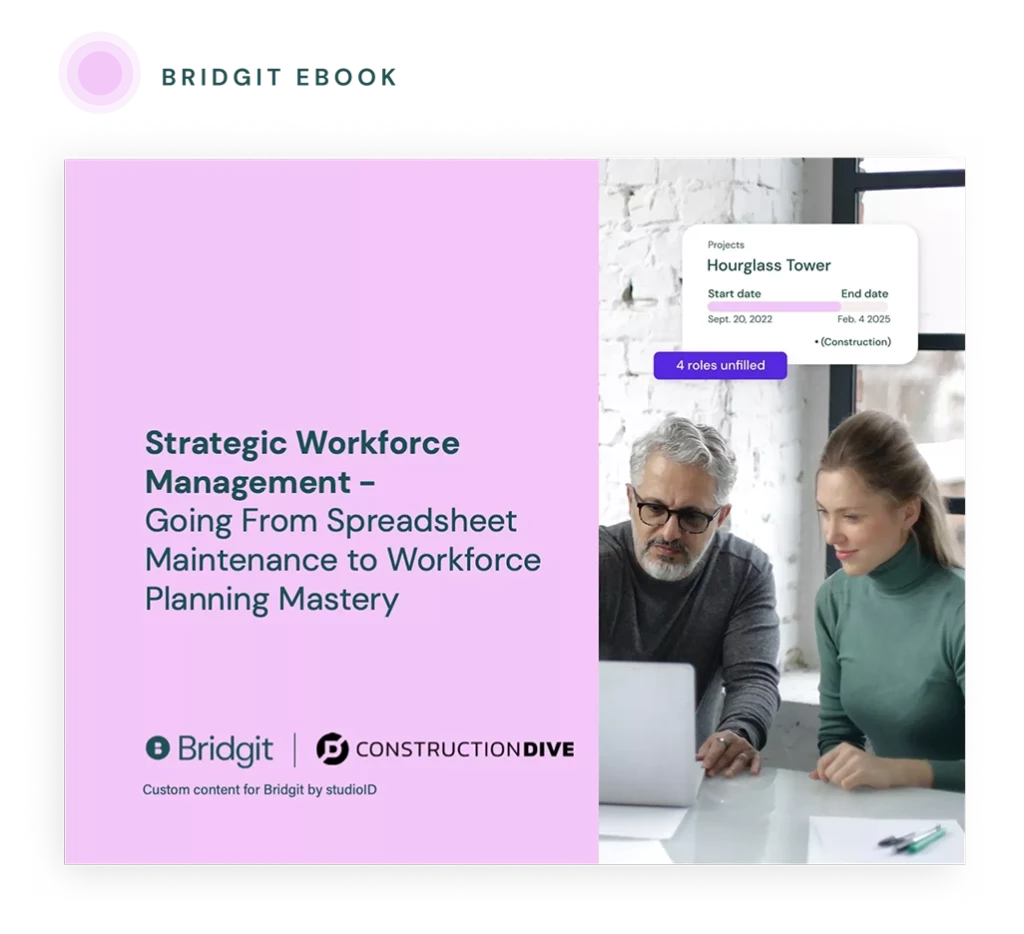A significant portion of business decisions are made based on the executive summaries of the relevant proposals. For decisions made after a more detailed assessment process, the executive summary still plays an important role in determining which proposals are investigated more thoroughly and which are discarded immediately. This does not diminish the importance of having in-depth analysis throughout your proposal, however it does illustrate the necessity of writing a strong executive summary for all your construction project proposals.
Table of Contents
Depending on the size of the project and company, the responsibility of writing an executive summary may fall to the estimator or project manager, but can also involve those in the roles of project executive and estimate coordinator. The most important thing to consider when writing an executive summary for a construction project as part of a response to an RFP is that this is the opportunity to pitch your proposal. You want to outline the most important information and allow the reader to become familiar with what’s contained in your proposal, but you also want them to come away with an understanding of why your proposal is the one that needs to be selected.
This article will answer all your questions relating to how to write a response to an RFP executive summary. It will first outline the necessary parts of any strong construction proposal executive summary, and will finish with some tips for making your executive summary more powerful, which will ultimately help you win more business.
- Define the Problem
- Recommend a Solution
- Schedule and Budget
- Risks and Mitigations
- Conclusion
How to write a great construction project executive summary [For your project proposal]
Define the Problem
A strong way to start an executive summary is by describing the problem you have been asked to address. You want to clearly state who you are and put in explicit terms the outcome you are trying to achieve. This will allow for the prospective client to visualize your goals and the proceeding path to accomplishing them, but also allows you to illustrate that you have a comprehensive understanding of the demands and requirements of the project.
A good example:
It is with great enthusiasm that we present this proposal for [Project Name.] [Your company/team name] has reviewed the provided RFP documents, and I have no doubt our enthusiasm, attention to detail, and past experience will enable us to deliver an exceptional project outcome. This project is accompanied by many challenges, including operating in a highly populated area, demanding schedules, and following an inflexible budget, and we are confident our past experience managing similar projects will enable us to address these challenges and deliver on a successful final product.
[These are just general examples of challenges confronted on a project, but in your real executive summary include more specific challenges or details related to the specific RFP you are responding to.]
Recommend a Solution
Here you can sell yourself and your solution to the client. You want the solution to be the most in-depth portion of the executive summary, as you want to show that you’ve taken the time to consider all the factors at play. Ensure you are writing persuasively; you need the client to know this isn’t just one of the possible solutions they could choose, this is the solution they and their company need. Don’t only define what the final solution will look like, but take the opportunity to explain your approach and strategy to ensure the final product meets the expectations of the client.

Looking to be more strategic with your people?
We partnered with Construction Dive to outline the steps any contractor can take to be more strategic with their workforce management.
It can also be valuable to provide evidence of your team and company’s qualifications for the project. Past success in construction project management is an important factor in choosing who to award a project to, so providing examples that demonstrate how you have managed similar projects in the past is extremely valuable and can make your proposal more powerful. Specifically, you can mention some of the projects your construction project executive or project managers have achieved success on in the past.
For tips about improving communication as a Project Manager, check out this blog.
Schedule and Budget
Next, it will be important to outline the expected budget and schedule of your proposal. These are important considerations for most decision makers, so it is a good idea to make this portion easily digestible and to the point. If you have abnormal budget items or scheduling choices, it can be beneficial to touch on these here.
Take the opportunity to briefly explain why these choices were made and how they will benefit the project. If you’re unsure if the budget is concise enough while still covering the necessary points, have a construction project manager or someone with experience review the information.
If you can fit it in without taking up too much room, it can be valuable to include some sensitivity in this as well. Ideally, most of the sensitivity and analysis takes place later in the RFP response, but this shows you have considered potential different outcomes and are prepared to handle potential disruptions or setbacks. This also demonstrates you have a thorough understanding of construction project management and the processes involved.
Risks and Mitigations
This portion should take up a minimal percentage of the executive summary overall, but it is still valuable to include when possible. While this section isn’t an exhaustive list of all the risks involved in your proposal, it will demonstrate that you’ve taken the time to consider all aspects of your proposal and that your construction project manager is prepared to respond. Be sure to include mitigations for the risks you include as this demonstrates the depth of your understanding of the project and shows you are confident in your mitigation strategies.
Conclusion
This is an opportunity to provide a nice wrap-up of the executive summary the decision makers have just read through. Use this opportunity to really pitch your proposal – you want the reader to believe that this is the best option. Make sure to connect the things you’ve mentioned throughout the rest of the executive summary back to the goals and problems of the company you are pitching to.
Quick Tips for Writing Your Best Executive Summary
Below are some tips to keep in the back of your mind throughout the writing process:
Keep It Short
An executive summary should ideally be between 1 and 2 pages, or 5-10% of the report if it is a much longer proposal. This should be a quick read that hits all the important points of your proposal, so that an executive could read it and have an understanding of what is included in your proposal and why specifically your proposal should be picked.
Avoid Being Overly Technical
The executive summary should be easy to read and easily digestible, even for those who may lack some specific knowledge. Not everyone has experience as a project executive or project engineer, so make sure you avoid being overly technical and using jargon. The message from your executive summary should be simple: this is what we will do and why it will help. It does not need to be more complicated than that, so keeping it simple is your best bet, and leave the rest of the information throughout your RFP response.
Avoid Going Into Too Much Detail
Same as the last tip, the executive summary should be quick and easy to read. As mentioned earlier, many readers only need to grasp the general aspects of the project to decide whether it is worth consideration. If they want the nuances of your decision and the in-depth details, that’s what the rest of the report is for! Keep your executive summary high-level and focus on what specifically about your proposal makes it the best fit, rather than the in-detail specifics of the project.
Examples of Construction Project Executive Summaries
Writing an executive summary for a construction project requires striking the perfect balance—capturing the essence of your proposal in a way that’s sharp, compelling, and leaves the reader eager to learn more. In these summaries, the goal is to clearly showcase your understanding of the project challenges, your ability to provide innovative solutions, and the skills to manage risks effectively. Below are three distinct examples of executive summaries for various construction projects, each uniquely tailored to the specific demands and environments:
• High-Rise Commercial Building Project in Urban Area
• Multi-Site Healthcare Facility Expansion
• Industrial Facility Renovation During Ongoing Operations
High-Rise Commercial Building Project in Urban Area
Executive Summary:
Navigating the complexity of constructing a high-rise in the heart of a bustling city presents formidable challenges. Limited site access, noise regulations, and high traffic zones add layers of difficulty, but our team thrives in these conditions. Our extensive experience in urban construction allows us to anticipate obstacles before they arise, making us uniquely positioned to deliver exceptional results for this project.
To tackle restricted access and local regulations, we’ve designed a phased construction plan. By strategically scheduling work during quieter hours, we’ll reduce potential delays and ensure maximum efficiency. Our team’s keen focus on logistical coordination will keep the project on track, even amid the constraints of a dense urban environment.
We have crafted a budget that aligns with the demands of the project, incorporating strategies to handle potential setbacks like traffic delays. Every aspect of our approach is geared toward minimizing risks and ensuring a seamless workflow from start to finish.
Conclusion:
Our proven expertise with high-rise developments in challenging urban settings ensures that this project will not only meet its goals but do so with precision, efficiency, and minimal disruption.
Multi-Site Healthcare Facility Expansion
Executive Summary:
Coordinating construction across multiple healthcare sites is a logistical puzzle, but it’s one our team knows how to solve. With each location operating under distinct regulations and demanding specialized skills, the challenge lies in synchronizing labor and maintaining momentum across all sites simultaneously.
We’ve developed a schedule that ensures efficient deployment of resources to each location, preventing bottlenecks and delays. Our strategy emphasizes real-time adaptability, allowing us to shift resources between sites as needed to maintain progress and stay ahead of potential issues.
Risks, such as labor shortages or regulatory hurdles, have been fully anticipated, and our mitigation strategies will ensure no site is left understaffed or facing unexpected delays.
Conclusion:
With extensive experience in managing large-scale, multi-site projects, our team is fully equipped to keep this expansion on track, ensuring that every facility receives the attention it needs, on time and within budget.
Industrial Facility Renovation During Ongoing Operations
Executive Summary:
Renovating an active industrial facility demands precision and a well-thought-out approach. The challenge is twofold: carry out substantial renovations while keeping daily operations uninterrupted. Our solution? A phased renovation plan that carefully times construction around the facility’s least active periods, ensuring minimal disruption.
The proposed schedule reflects a deep understanding of the facility’s operations, and our flexible approach allows us to quickly adapt if unexpected challenges arise. We’ve accounted for every risk, from operational interference to equipment malfunctions, with solutions ready to implement at a moment’s notice.
Our cost structure remains tightly controlled, ensuring that the project remains on budget while also allowing for any necessary adjustments that might come up during the renovation process.
Conclusion:
Our team’s expertise in managing complex industrial projects while maintaining operational continuity ensures that this renovation will proceed smoothly, with no disruptions to your ongoing production.
For tips to improve your company’s bid-hit ratio, check out this blog, or check out the Bridgit Blog for more construction-related topics.


